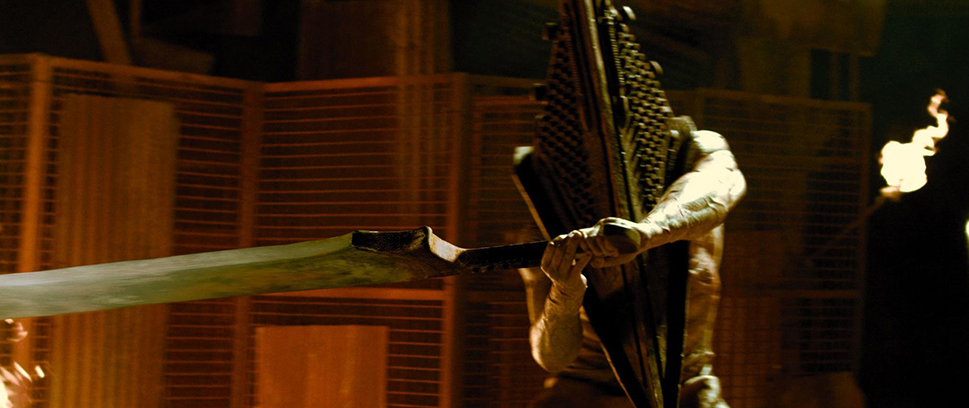
Hold On
Sometimes small design choices are what can make or break a game, with a single tweak meaning the difference between an amazing pillar of the medium and a tepid also ran. This is especially true with horror games, which hinge on similar mechanisms to a haunted house ride. Just look at P.T. and Layers of Fear, two games that very much wear their theme park ride inspirations on their sleeves. But a key structural difference is what makes P.T. a masterclass of horror while Layers of Fear is just a meandering, listless experience.
The similarities between P.T. and Layers of Fear are obvious: You progress through a house in first-person perspective as you interact with things you find along the way. Spooky things start happening to you as you continue forward through the darkness, like a shadowy figure eyeing you down the corridor, or a baby crying in an adjoining bathroom. “Forward” is the key word in all of this, because all you can do in P.T. and Layers of Fear is move forward. Sure, you have to stop occasionally to solve a puzzle here and there, but all of the experience in both cases is on rails.
Which isn’t to say that it’s predictable. Far from it, as the calm layout of the houses crescendo into a hellscape before very long. The build towards this total expression of horror is what makes the on rails structure work so well. In P.T.’s case, the entire game takes place in the same hallway that keeps repeating over and over. You can easily see its progression from an ordinary house corridor at night to a living hell the further and further you go in.
Meanwhile, Layers of Fear doesn’t work like that. Instead of taking place in a stable, predictable area that you can bolt spooky stuff onto gradually, Layers pushes you forward through a house without any real sense of place, instead shoving you into a seemingly random room every time you open a door. Spooky things ramp up, certainly, but you never really get the feeling that you’re trapped in a haunted space. It just feels like so much carnival fakery.
The reason P.T. works so well is because it uses that one hallway over and over. Since you start out feeling like you’re in a position of relative safety, as things begin to degrade, you begin to develop something along the lines of reverse Stockholm Syndrome. You begin to yearn for the time when the hallway was completely “safe” and predictable as things start spiraling out of control. The familiarity with the environment is the point. P.T. establishes a status quo and slowly starts tearing it down, making nowhere feel safe.
For further evidence of why this sense of place works, you need only look to another branch of P.T.’s family tree, Silent Hill 4: The Room. This mix of first and third person perspectives combined a more traditional survival horror experience with a central hub, i.e. your apartment, behaving like the traditional safe rooms where you save and story items at, and where no enemies appear. But as the game goes on, this safe space slowly becomes less safe and more haunted, with unseen forces sapping your energy should you get too close. And the fact that it’s in first person means it’s harder to disassociate yourself from the character you’re playing, giving you fewer outs for escape and relief. P.T. is much the same, except the entire game is a safe space that constantly gets walked back until you’re longing for its initial state.
The problem with Layers of Fear is that it doesn’t have this sense of place, instead throwing you into one out-of-nowhere encounter after another. You can see the seams on these encounters, making the entire affair feel like the creaky haunted house ride it is instead of transcending the form like P.T. does. It doesn’t even capture the surrealism of Observer, developer Bloober Team’s other walking simulation that can get away with the same trick as Layers by simply having the premise be that you’re rummaging around through people’s stream-of-conscious memories. Layers benefits from no such framing, instead dragging you along for the ride as you learn of a murderer’s decent into madness.
It’s clear that P.T. and Layers of Fear share a lot of the same design sensibilities thanks to their very guided, carnival ride-like feel, but P.T. makes for the more inspired design simply by grounding itself in a kind of reality and establishing internal consistency. It’s almost funny how, in being so completely unpredictable in its level design, Layers of Fear manages to be the more predictable, less scary game. The trick of P.T. is that it gives you something you think you can rely upon – the predictability of the one hallway you’re constantly moving through – only to slowly tear it down, and you with it.





